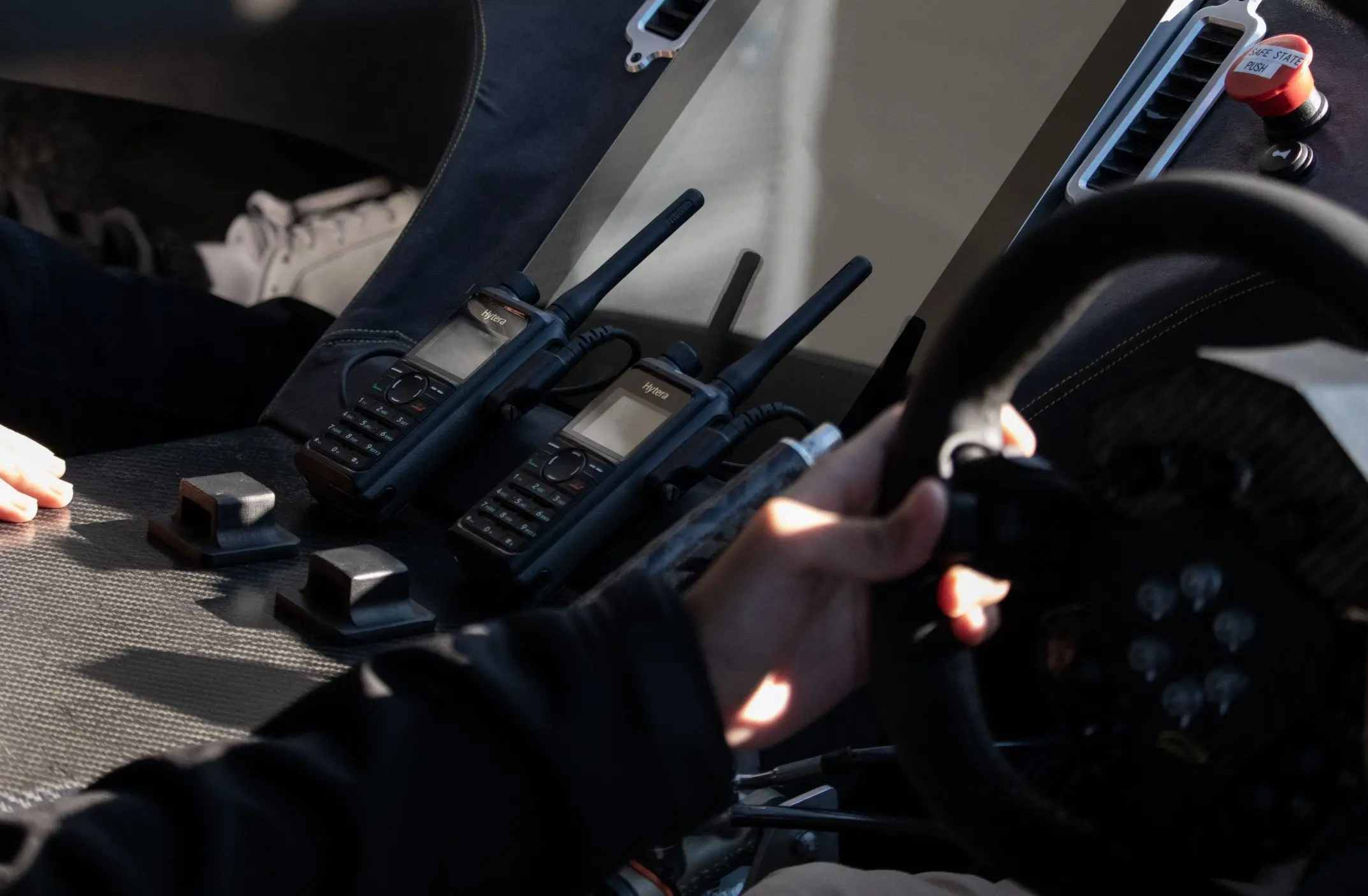
-

User
Sunswift Racing Team Hytera Partner: D2N Technology Solutions -

Project Time
2023 -

Market Segment
Sports - Motor Racing -

Product
PNC380 Hand Portable PoC Radio
PD66X DMR Hand Portable Radio
HP68X DMR Hand Portable Radio
Challenge
It was vitally important that members of the Sunswift Racing team were able to communicate with each other at all times. A high-quality radio was required for the solar car in particular. This did not include noise dampening, as ensuring the quality on the radios was critical for making split decisions and calls.
The team also needed a long-range radio to be able to communicate between the various convoy vehicles supporting the race car, which were constantly on the move and often had large distances between them. In addition, they needed a radio capable of communicating from the escort vehicle back to Sydney to allow the support team to be involved.
Richard Hopkins, University of New South Wales (UNSW) Professor of Practice and Sunswift Racing Team Principal, adds: “We also required channel encryption so that our internal communication would be as kept secure and clear, without a fear of other teams listening in or attempting to communicate on the same frequency.
“The comms also had to be multi-channel, as due to the separation of communication and the priority of certain vehicles such as the scout car, we needed radios that could be given speaking priority and be set to switch channels easily.”
Once these radio requirements became apparent, Sunswift realised that its existing equipment would not be suitable for multi-channel communication. Nor would it cope with the distances between vehicles on the road, which can sometimes be up to 5-10km. The team approached Hytera partner D2N Technology Solutions to investigate potential solutions to these problems.

Solutions
D2N undertook a thorough assessment of Sunswift’s requirements and concluded that a Hytera solution was the best answer. Hytera equipment included multiple PNC380 handheld PoC radios for communication between the convoy and the home team located in Sydney. PD66X DMR handheld radios were specified for the solar car and escort vehicles, while HP68X DMR handheld radios were deployed for full communication between the convoy vehicles.
Magnetic base antennas were used to connect with the HP68X to extend the coverage range between convoy vehicles with remote speaker mics (RSMs) specified for each radio. Radio harnesses were fitted to connect to the driver and passenger helmets and allow for push-to-talk communications via a button on the steering wheel. D2N also supplied all the respective chargers, spare batteries and cables for each radio type.
When Sunswift originally approached D2N, by their own admission, they knew how they wished to split the lines of communication, but had very little idea of how to do this. Hopkins says: “D2N team members were both very passionate in approaching the problem and supportive of the team both by setting up the initial radio settings and instructing team members on how to make further changes themselves. This support both in terms of equipment, and in the setup of this equipment, was critical for our success in the World Solar Challenge.”

About Sunswift Racing Team Hytera Partner
The Bridgestone World Solar Challenge is a 32 year old biennial international event for solar powered cars in Australia. It involves driving 3,022 kilometres through the Australian outback from Darwin, Northern Territory to Adelaide, South Australia. The event was created to push the limits of technological innovation by travelling through the outback in a vehicle powered only by the energy of the sun.
Teams are usually comprised of tertiary and secondary students, who are challenged to design, engineer and build with their own hands an energy efficient electric vehicle.
In the latest challenge, held in October 2023, the winning team was Sunswift Racing with an amazing car and team using Hytera comms specified and supplied by D2N Technology Solutions.

Benefits
Simple, Easy to Use Communications
The Hytera digital radio equipment proved to be far superior to the existing UHF radios the team had used. The ease of setup, the communication range and the audio clarity were significantly better when compared with any other market solutions the team had experienced. That, plus the provision of a spare redundant radio for the race team, meant that communication was consistent and clear across thousands of kilometres.
Reliable Comms for Race Drivers
The in-car radio harnesses and helmet connections meant that communication with escort vehicles was very simple and consistent for the racing car drivers, which allowed them to concentrate on the road at all times. The radios come with built-in GPS, so the location of all the vehicles could be tracked.
“Game-Changing” PNC380 PoC Radios
The PNC380s were a game-changer during the competition as they allowed the team to draw upon the greater resources of the wider 90-person Sunswift team, rather than just the 25 students accompanying the race team. “We gained a massive strategic advantage for planning ahead, as well as real-time monitoring of the vehicle,” explains Hopkins.

Loud, Clear Audio
Many teams relied on designated UHF channels which were difficult to hear on, while Hytera’s digital radio channels were incredibly clear, greatly reducing communication errors between team members, according to Hopkins.
Tough, Rugged Terminals
All the Hytera radios are IP67and MIL-STD-810G certified, so the devices are fully protected from dust, a crucial consideration in Australia’s dusty outback regions. They are also shock and vibration-resistant, so they can cope with the rigours of the road.
Summary
“The ability to communicate with Sydney, and the separate channels for radios gave Sunswift an immense competitive edge over the competition,” concludes Richard Hopkins. Sunswift Racing is currently working on and developing Sunswift 8, the world’s first ‘TriBrid’ solar, battery and hydrogen fuel cell-powered car. Due for launch in June 2025, Sunswift 8 will also include a number of key solutions provided by D2N.

Ready to talk? Get in touch with us.






